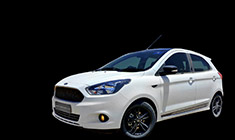News
New-gen Nissan GT-R could be co-developed with next Acura NSX
The new R36 GT-R will be a hybrid, preferably a plug-in model that can run a certain distance on electric power alone.
The R35 Nissan GT-R might have been laid to rest in the history books, but a new one is coming. Nissan has confirmed the new R36, and new details on the car’s development emerged at the New York Motor Show.
According to Nissan North America's chief planning officer, the next-generation hybrid-powered GT-R is just three to five years away. If Honda wants to let Nissan piggyback on the new NSX development, things could get very interesting.
Nissan North America senior vice president and chief planning officer, Ponz Pandikuthira, has said that the new R36 GT-R will be a hybrid, preferably a plug-in model that can run a certain distance on electric power alone. The ICE power will come from a twin-turbo six-cylinder engine. He further said that the GT-R’s move to hybrid is to ensure that the car remains usable as a daily driver to "drive your kids to school" or "go to the grocery store."
The second-generation NSX's much-maligned development time could theoretically fit within Nissan's three-to-five-year timeline if the two companies started working together, but the two models are very different from each other. Also, it is interesting to note that the next-gen NSX is slated to be fully electric.
“Can we do a next-generation NSX and GT-R off the same platform, make the NSX authentic to what it stands for and make a GT-R authentic to what it stands for? So they are not clones?” Pandikuthira asked rhetorically. “Can you co-develop two cars like that? I think we can.”
“The authenticity of this matters,” Pandikuthira continued. “An Acura NSX had a very different origin from what that car was. Super lightweight, all aluminum.” The VP described the supercars’ differences as the NSX being “super precise, lightweight, aerospace execution, whereas a GT-R is a brute, but a sophisticated brute.”
Pandikuthira said that he “would be optimistic” that a flagship supercar could be developed by the two companies on the shared platform. He also noted that Nissan’s new CEO, Ivan Espinosa, was one of the people leading the Honda and Nissan merger negotiations while in his previous role as Nissan’s Chief Planning Officer.
Espinosa has been working with Honda constantly and, according to Pandikuthira, “never stopped talking with Honda.” While Pandikuthira says that discussions of a full-blown merger have indeed ceased, it’s important to note that the two automakers announced a “strategic partnership” to collaborate on future products last August, months before talks of a formal merger.
“We need collaboration,” Pandikuthira said. “We’re going to need partnerships to deliver vehicles. I think partnerships are going to be a key part of our future.”
Source: The Drive













.jpg)





